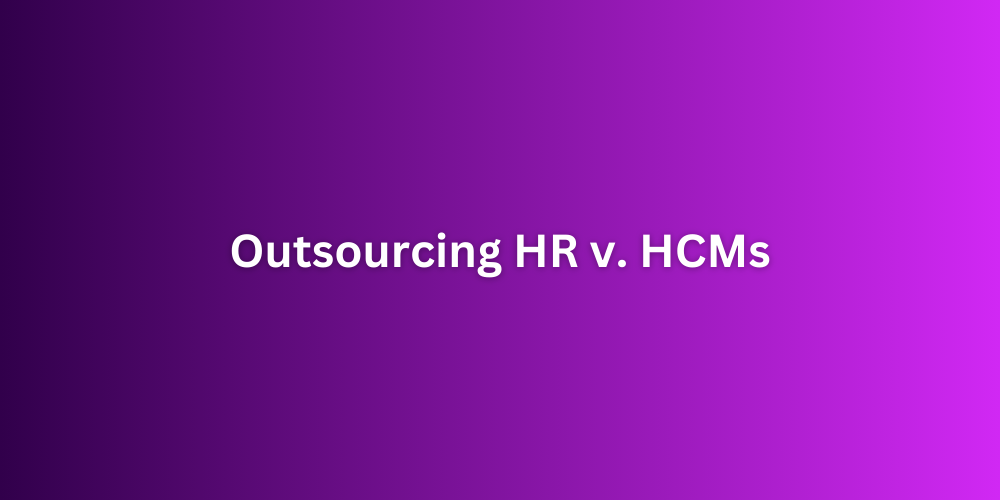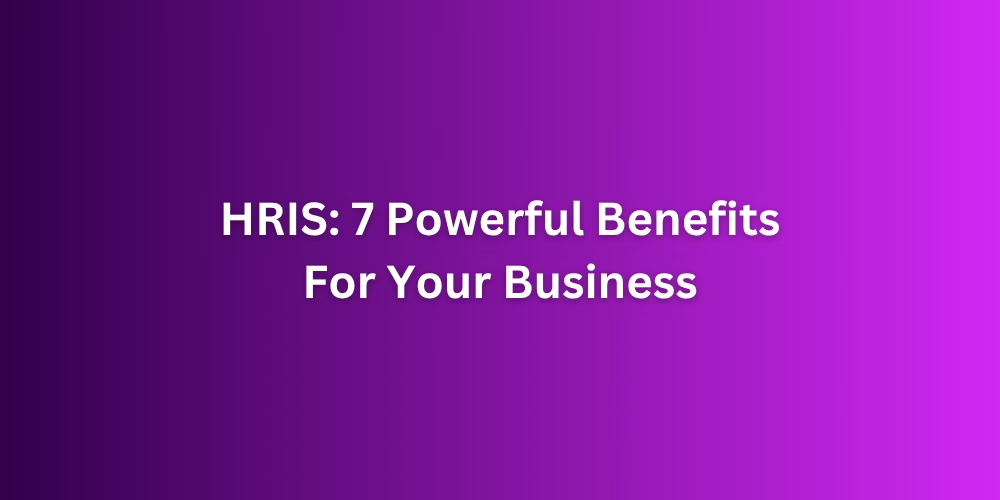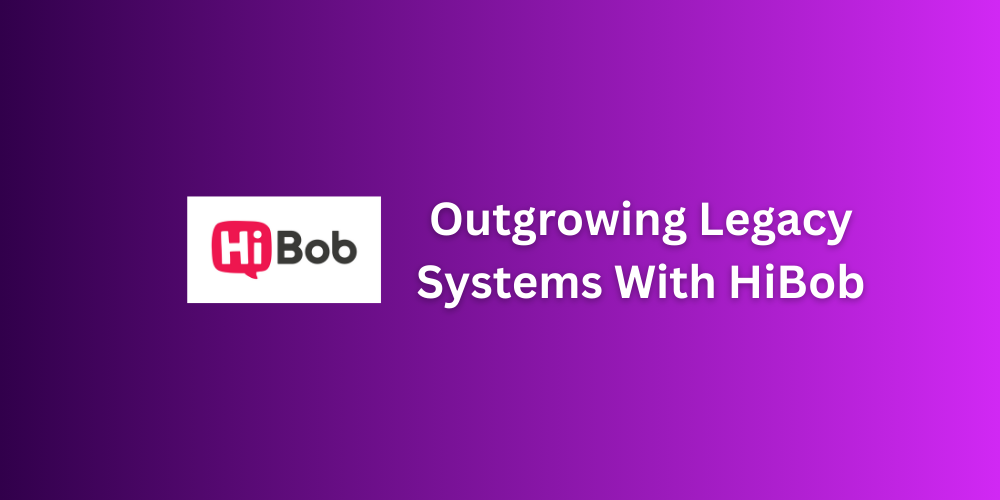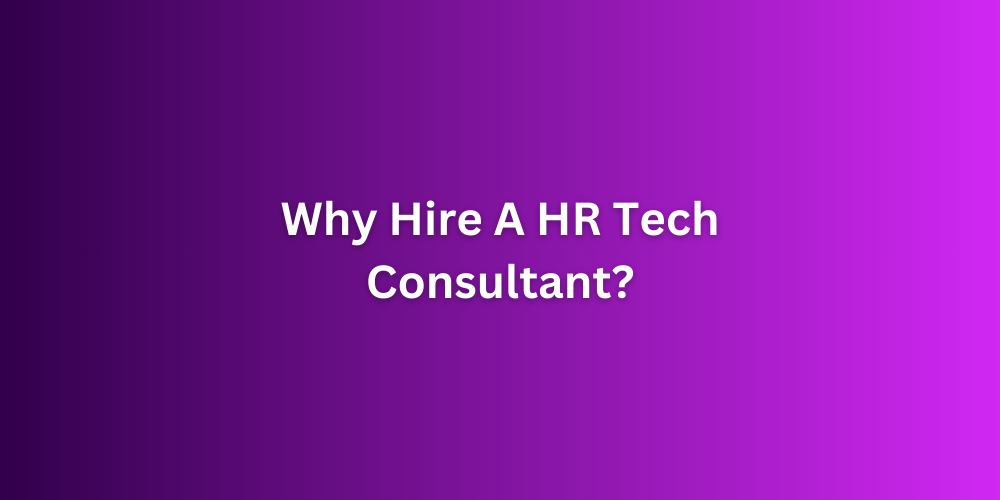In today’s fast-paced business landscape, managing human resources effectively is critical to success. For many Australian companies, the question of how to handle HR—whether to keep it in-house, outsource it, or leverage technology—looms large. At Digital Directions, we’ve seen businesses wrestle with this decision firsthand. The key phrase outsourcing HR often comes up, but is it always the best path? While outsourcing through Human Resource Outsourcers (HROs) or Professional Employer Organisations (PEOs) has its merits, we believe Human Capital Management (HCM) systems—often referred to as HRIS (Human Resource Information Systems)—offer a more strategic, cost-effective, and scalable solution for most businesses in the long run.
In this blog, we’ll unpack the definitions of HCMs, PEOs, and HROs, compare their short- and long-term benefits, and explore why HCMs often come out on top. We’ll also address why outsourcing providers might not deliver the unique value you expect and highlight scenarios where outsourcing could make sense temporarily. By the end, you’ll have a clearer picture of which HR solution aligns with your business goals.
- What Are HCMs, PEOs, and HROs?
- Human Capital Management (HCM) Systems
- Professional Employer Organisations (PEOs)
- Human Resource Outsourcers (HROs)
- Short-Term vs Long-Term Benefits: HCMs, PEOs, and HROs Compared
- The Hidden Truth: PEOs and HROs Are Middlemen Using HCMs
- Why HCMs Win for Most Australian Businesses
- A Niche Case for Outsourcing—and When to Switch to HCMs
- Choose HCMs for Control and Growth
What Are HCMs, PEOs, and HROs?
Before diving into the comparison, let’s clarify what each option entails, their functions, and their typical costs per employee per month (PEPM).
Human Capital Management (HCM) Systems
HCM systems, sometimes called HRIS, are cloud-based or on-premise software platforms that empower businesses to manage HR functions in-house. These platforms centralise tasks like payroll, employee data management, recruitment, onboarding, performance reviews, and compliance reporting. Modern HCMs, such as BambooHR, Paycom, or Workday, integrate with accounting, CRM, and ERP systems, offering robust analytics and customisation to fit your business needs.
- What they do: Automate and streamline HR processes, giving businesses full control over workflows, data, and employee experience.
- Cost: Typically $20–$30 PEPM, with initial setup fees ranging from $1,000 to $10,000 depending on the platform and company size.
- Key differentiator: HCMs are tools you own and manage, offering scalability and flexibility without third-party involvement.
Professional Employer Organisations (PEOs)
PEOs provide comprehensive HR outsourcing through a co-employment model, where they act as the employer of record for tax and benefits purposes while you retain operational control. PEOs bundle services like payroll, benefits administration, compliance, and workers’ compensation into a single package, making them popular among small to medium-sized businesses.
- What they do: Handle end-to-end HR tasks, reducing administrative burdens and offering access to competitive benefits through economies of scale.
- Cost: $85–$150 PEPM, often with additional setup or exit fees.
- Key differentiator: PEOs share legal liability and provide a “turn-key” HR department, but you sacrifice some control over processes.
Human Resource Outsourcers (HROs)
HROs offer tailored HR services, allowing businesses to outsource specific functions like recruitment, training, or payroll while keeping others in-house. Unlike PEOs, HROs don’t co-employ your staff—you remain the sole employer of record.
- What they do: Provide customised HR support based on your needs, from one-off tasks to ongoing management.
- Cost: Varies widely, typically $50–$100 PEPM for selective services, though comprehensive packages can approach PEO pricing.
- Key differentiator: HROs offer flexibility to pick and choose services, ideal for businesses wanting targeted support without full outsourcing.
Short-Term vs Long-Term Benefits: HCMs, PEOs, and HROs Compared
When deciding how to manage HR, it’s tempting to focus on immediate needs, but a strategic approach considers both short-term wins and long-term value. Here’s how each option stacks up.
Short-Term Benefits
- HCMs: Implementing an HCM requires upfront investment in setup and training, which can take weeks to months. However, once live, businesses gain immediate access to streamlined processes, self-service portals for employees, and real-time data. For companies with some HR capacity, the short-term payoff is improved efficiency and transparency.
- PEOs: PEOs shine in the short term for small businesses with limited HR expertise. They offer a plug-and-play solution, handling payroll, compliance, and benefits from day one. This allows business owners to focus on growth without worrying about HR complexities.
- HROs: HROs provide quick relief for specific pain points, like a hiring surge or compliance audit. Their customisation means you can address immediate needs without overhauling your HR structure, making them a flexible short-term option.
Long-Term Benefits
- HCMs: Over time, HCMs deliver unmatched value through scalability, cost efficiency, and control. As your business grows, you can customise workflows, integrate with other tools, and leverage analytics to drive strategic decisions. The fixed PEPM cost remains predictable, and you avoid reliance on external providers. Plus, owning your data ensures compliance and continuity if you switch systems.
- PEOs: While PEOs simplify HR long-term for some, their higher PEPM costs add up as you scale. The co-employment model can limit flexibility, particularly for benefits design or policy changes. Exiting a PEO is also complex, requiring you to rebuild payroll and benefits infrastructure, which can disrupt operations.
- HROs: HROs can remain useful long-term for niche needs, but their value diminishes as costs accumulate for multiple services. Without a unified platform, managing fragmented HR processes can lead to inefficiencies, and you’re still responsible for compliance, limiting liability protection compared to PEOs.
The Hidden Truth: PEOs and HROs Are Middlemen Using HCMs
While PEOs and HROs tout their expertise, there’s an often-overlooked reality: many rely on the same modern HCM software you could implement directly. Providers like PEOs use platforms such as BambooHR or ADP to manage payroll, compliance, and employee data, layering their services—and fees—on top. HROs, too, often leverage HCM tools for tasks like recruitment or reporting, passing the cost to you without giving you direct access to the technology.
This middleman dynamic means you’re paying for an intermediary rather than owning the tools outright. With an HCM, you cut out the markup, gaining direct control over your HR processes and data. For example, a PEO charging $100 PEPM might use an HCM that costs $25 PEPM, pocketing the difference for their management. Over years, this gap compounds, diverting funds from other business priorities.
Moreover, outsourcing providers may restrict your ability to customise workflows or access raw data, as their systems are designed for multiple clients. An HCM, by contrast, lets you tailor everything to your business, from onboarding flows to performance metrics, without a third party dictating terms.
Why HCMs Win for Most Australian Businesses
After weighing the options, HCMs emerge as the superior choice for most Australian businesses, particularly those planning to grow or optimise operations. Here’s why:
- Cost Efficiency Over Time: At $20–$30 PEPM, HCMs are significantly cheaper than PEOs ($85–$150) or comprehensive HRO services ($50–$100). The initial setup cost is offset by long-term savings, especially for businesses with 50+ employees.
- Scalability and Flexibility: HCMs grow with you, supporting everything from 10 to 10,000 employees. You can add modules like learning management or analytics as needed, unlike the rigid packages of PEOs or the patchwork approach of HROs.
- Control and Customisation: With an HCM, you own your HR processes, data, and integrations. This autonomy lets you align HR with your unique culture and goals, something outsourcing often dilutes.
- Data-Driven Insights: HCMs provide dashboards and reports that empower strategic decisions, from workforce planning to retention strategies. Outsourcing providers may offer reports, but they’re often less granular and tied to their systems.
- Future-Proofing: As HR tech evolves, HCMs keep you at the forefront with updates and integrations. Outsourcing ties you to a provider’s timeline and tech stack, risking obsolescence.
A Niche Case for Outsourcing—and When to Switch to HCMs
We’d be remiss to say outsourcing never makes sense. For a small Australian business—say, a 10-person startup with no HR staff—a PEO or HRO can be a lifeline. Imagine a boutique café in Melbourne needing payroll and compliance support but lacking the budget for a full-time HR manager or HCM license. A PEO could provide affordable benefits and legal protection for $1,000 monthly, while an HRO might handle recruitment for a one-off fee. These solutions save time and reduce risk when resources are tight.
However, outsourcing is often a stepping stone, not a destination. If that café grows to multiple locations or a rapidly scaling tech startup hires 50+ staff, the limitations of outsourcing become clear. PEO fees balloon, and HROs struggle to keep up with complex needs. At this stage, an HCM becomes the smarter investment. For example, a $5,000 HCM setup with $25 PEPM could save thousands annually compared to a PEO charging $100 PEPM for 50 employees. Plus, the HCM streamlines onboarding, performance tracking, and compliance as the business scales, driving efficiency across the board.
For businesses eyeing growth, needing to integrate HR with other systems, or wanting to optimise operations, transitioning to an HCM is a no-brainer. It’s about taking ownership of your HR strategy and building a foundation that supports your vision.
Choose HCMs for Control and Growth
At Digital Directions, we’ve seen countless Australian businesses navigate the outsourcing HR dilemma. While PEOs and HROs offer short-term relief, their costs, lack of control, and reliance on HCM-like tools make them less compelling for the long haul. HCMs, with their affordability, scalability, and customisation, empower businesses to manage HR strategically and efficiently.
If you’re a small business just starting out, outsourcing might tide you over. But as soon as growth or efficiency becomes a priority, an HCM is the way to go. It’s not just about saving money—it’s about building an HR system that grows with you, aligns with your culture, and unlocks insights to drive success.
Ready to take control of your HR with a tailored HCM solution? Digital Directions can assist with tool selection, implementation, and integration for HR tech software, all custom-designed for the unique needs of your business. Contact us today to explore how we can help you build an HR strategy that scales with your vision.







